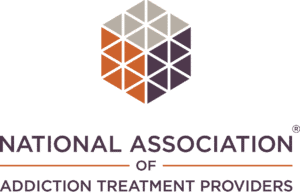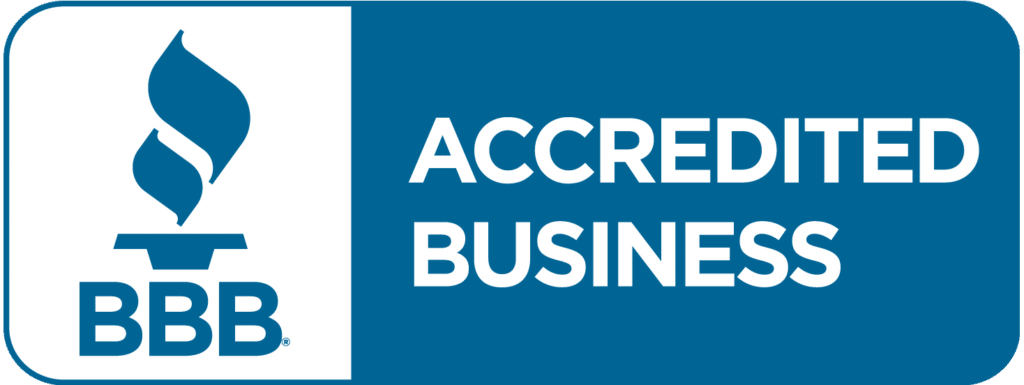What Is a Relapse Prevention Plan?
A Relapse Prevention Plan is a personal method through which individuals recognize and cope with their triggers and high-risk situations involving abusive substances or situations. By following this plan, individuals are well guided on a step-by-step process of what to do in the event that the urge or craving to use abusive substances arises. This is an essential plan for anyone in recovery and needs to be reviewed on a continuous basis when new challenges arise or occur.
How To Create a Relapse Prevention Plan?
Writing an effective Relapse Prevention Plan really requires a great deal of contemplation and reflection about personal triggers, lifestyle factors, and coping mechanisms. A plan of this nature should generally be worked out with some sort of medical or psychological professional; however, here is a guide to help break things down in steps:
1. Identify Your Triggers
The very first thing to establish about a Relapse Prevention Plan involves understanding what situations, people, places, or emotions arise that would make one want to use substances. There could be many facets that may trigger an individual but they may include:
| Stressful work situations | Parties or social gatherings |
| Loneliness or isolation | Arguments or conflict |
By understanding exactly what triggers occur with a particular individual, there is better preparation and thought as to handling such a situation.
2. Develop Coping Strategies
Once an individual has identified their triggers, the next step is developing healthy coping mechanisms to deal with cravings. Some common strategies include:
| Deep breathing exercises | This can calm the nervous system that controls the body’s involuntary functions. |
| Physical activity | Exercise can serve as a distraction and help alleviate stress or anxiety. |
Journaling | Writing down your feelings can help you process emotions without turning to substances. |
| Reaching out for support | Contact a friend, sponsor, or therapist when you’re feeling vulnerable. |
3. Develop an Action Plan
An action plan in this case is a plan that describes specific actions a person should make in the event of a high-risk situation. This may include leaving the setting they are in, utilizing one of their coping skills, or calling one of their dependable family members or friends for support.
4. Plan for a Slip
One needs to realize that slips in the process are not a personal failure but part of the healing process. At all times, one should consider what they will do in case a slip occurs. This may include calling a member of their support network, re-reading their Relapse Prevention Plan, or seeing their therapist. Having a plan can decrease the severity of the damage and have you back on track in less time to the recovery road.
5. Include Self-Care
Regular self-care will help in keeping your mind, body, and spirit healthy, which can reduce the risk of relapse. A person’s plan should ensure time is available for activities like:
| Meditation or mindfulness | Healthy eating | Adequate sleep |
What happens in Relapse Prevention?
Relapse prevention is a collaborative process by the clinician and the person currently in recovery. The process aims at the identification of high-risk situations and methods for dealing with such challenges without going back to abusing substances. In relapse prevention therapy, a couple of steps are taken usually in order for the person to recognize, avoid, or cope with situations that may lead them to relapse.
1. Identification of Potential Triggers
Understanding triggers is the cornerstone of relapse prevention. Triggers are events, situations, or even people that make one want to use drugs or alcohol. Identifying one’s triggers can assist in learning how to avoid or manage them. Common examples of triggers include:
| Social pressures | Events in situations where friends or peers could offer substances or pressure the individual with the use of abusive substances. |
| Emotional states | Stress, anger, depression, or even excitement create situations where substance use and abuse are triggered. |
| Environmental factors | A place or person can serve as a stimulus that reminds someone of the good times associated with substance use and therefore lead back to it. |
Clinicians can help individuals identify these triggers and develop strategies either to avoid them or to cope with the feelings they bring on. If you are not sure what your triggers are, try journaling your thoughts and feelings when you are tempted to use drugs or alcohol so that you can try to better understand where these urges come from.
2. Lifestyle Evaluation
The daily life of a person can significantly affect their probability of a relapse. In this regard, sleep, nutrition, exercise routines, and social networks may lower or increase the probability of contact with provocative stimulus. For example, disturbed sleep and poor nutrition increase emotional volatility in any person and thereby make the resistance to urges difficult to manage.
3. Coping Mechanisms
Coping skills play a paramount role in the process of relapse prevention. Through this, individuals acquire various cognitive and behavioral techniques to deal with their substance-use urges. Some of the commonly adopted coping strategies include:
| Mindfulness and relaxation techniques | These types of techniques are very helpful in mastering the art of managing and reducing stress. |
Problem-solving skills | Having a clear idea about common everyday problems that someone may face helps individuals deal with daily life difficulties without the use of substances. |
Getting support | Friends, family, and support groups come in handy for such a fight against relapse or addiction. |
A well-structured environment is needed to prevent the process of relapse in which persons recovering could enable themselves to grow in the recovery process. This could be removing substances from the house and avoiding social functions involving substances or even limiting association with people who would promote substance intake.
4. Ongoing Support
Relapse prevention does not just stop after a few sessions of therapy; a support network is very essential in avoiding recurrence. Long-term success needs constant and continued support through therapy, counseling, or group meetings. Surround yourself with people who support your sobriety and understand what you are going through. Support can come from family, friends, therapists, support groups, and sponsors. For this reason, accountability to a therapist, a peer support group, or a trusted friend is central to staying on the right track and not relapsing back into substance abuse.
Tips to Prevent Relapse in Substance Abuse Recovery
Substance abuse is a complex and challenging condition that affects millions of individuals worldwide and relapse prevention is key since 75% of subjects relapsed within 1 year of treatment. Achieving and maintaining recovery from substance abuse requires a comprehensive approach that addresses all aspects of addiction, including physical, psychological, and social factors. Recovery is a lifelong process that requires dedication, patience, and effort. One of the most significant challenges individuals in recovery face is the risk of relapse.
Relapse is the return to substance use after a period of abstinence. It’s common for individuals in recovery to experience relapse, and it can be devastating for their progress. However, relapse is not a sign of failure, and getting back on track is possible. Understanding the factors that contribute to relapse and developing relapse prevention strategies is crucial to maintaining sobriety.
Relapse prevention strategies for substance abuse include identifying triggers and high-risk situations and developing coping strategies to manage them. Triggers can include people, places, or things associated with substance use. High-risk situations can include stress, social events, or emotional turmoil. Developing coping strategies such as exercise, meditation, or seeking support from friends, family, or a therapist can help individuals manage triggers and high-risk situations.
What is the theory behind Relapse Prevention?
The Relapse Prevention Theory was first proposed in the 1980s by G. Alan Marlatt. Marlatt’s model is conceptualized under Cognitive-Behavioral Therapy and places particular emphasis on the need to understand the psychological, emotional, as well as social processes leading up to relapse.
Cognitive-Behavioral Theory (CBT) | The relapse prevention is based on the fact that interconnections between thoughts, feelings, and actions serve as the backbone; hence, CBT addresses these issues. In the opinion of Marlatt, “the solution to preventing relapse resides in addressing the cognitive-based processes of substance use.” Recovering addicts often get into trouble due to their thoughts like, “I can have just one drink,” or “This isn’t gonna hurt me.” RP attempts to quash these poorly reasoned conclusions and replace them with healthier, more realistic ones to enable the individual concerned to make a better choice. |
High-Risk Situations | This is based on the theory of Marlatt, who states that relapse to substance abuse is more probable in risky situations, such as when a person is exposed to triggers or an individual cannot manage their emotions appropriately. This can quickly snowball into a full relapse to the old use patterns. The risk of such a relapse to use in high-risk situations can be coped with better if one recognizes such situations as possibilities. |
The Abstinence Violation Effect | The other important part of Marlatt’s model is the “abstinence violation effect,” which describes the negative emotional consequences following a lapse. Feelings of guilt, shame, or helplessness subsequent to a slip are more likely to make a person feel like a failure, and full relapse is a more probable outcome. The theory of RP teaches individuals to view the onset of a lapse as an event to learn from, rather than an “all-out” failure, and to refocus on their recovery plan in order to prevent a full-scale relapse. |
Relapse Prevention Models
There are several relapse prevention models, all of which offer different means of developing an effective plan. Some of the most commonly used models are briefly discussed in the following paragraphs:
Marlatt’s Model | The cognitive-behavioral model developed by Marlatt’s is the most frequently used model for relapse prevention. This type of model places the emphasis on high-risk situations, the development of coping strategies, and cognitive distortions that lead to relapse. |
Mindfulness-Based Relapse Prevention (MBRP) | This treatment model combines strategies of traditional relapse prevention with mindfulness practices. The goal is to increase individuals’ awareness of their thoughts and feelings so that they might respond with mindfulness rather than automatically acting on cravings or engaging in substances when they encounter a high-risk situation. The model of Mindfulness-Based Relapse Prevention has contributed to a decline in the rate of relapse due to its effect on emotional regulation, thus reducing stress. |
The Gorski-CENAPS Model | Developed by Terence Gorski, the Gorski-CENAPS model emphasizes the stages of recovery and the warning signs that may indicate a pending relapse. This model outlines a sequence of steps that can prevent a relapse, including recognizing the early signs, understanding the progression of relapse, and developing a daily recovery plan. |
The Matrix Model | Initially designed for individuals recovering from stimulant addiction, the Matrix Model is a structured, multi-faceted approach that incorporates elements of cognitive-behavioral therapy, family involvement, and regular drug testing. This model focuses on building a strong support system and accountability, making it effective for relapse prevention. |
Additional Relapse Prevention Tools Workbooks and Worksheets
- The Mission Consumer Workbook – Maintaining Independence and Sobriety through Systems Integration, Outreach, and Networking – This workbook is designed to assist individuals in maintaining sobriety and independence by integrating support systems, outreach, and networking. It includes strategies and exercises for supporting recovery and preventing relapse.
- Relapse Prevention Workbook by Bradley A. Hedges, Ph.D., LPCC Psychologist – This in-depth workbook provides techniques to understand relapse and prevent it. This book contains psychological insights along with practical activities to help one implement personalized strategies for maintaining sobriety.
- My Relapse Prevention Workbook by Montgomery County Emergency Service, Inc. – This workbook enables the individual to more systematically approach triggers and build coping strategies to prevent relapse. This is a workbook aimed at helping the individual walk through the process of constructing a recoverable life.
- Cognitive Behavioral Relapse Strategies United Nations Office on Drugs and Crime – Using cognitive-behavioral techniques helps the client to understand and work through the thinking patterns that precede a full relapse. This program stresses the reinforcement of long-term sobriety by skill-building.
- Relapse Prevention Workshop from Relapse Prevention Therapy And Relapse Prevention Counseling Workbooks – The purpose of this workbook is to prevent relapse in a workshop style by teaching therapeutic methods to individuals on how to understand and manage their risk factors. It contains interactive exercises and counseling tools.
- Relapse Prevention Tool Worksheets by Peggy Ferguson, Ph.D. – This set of worksheets is geared to help a person learn how to identify and manage triggers, develop coping skills, and avoid relapse. They will show practical tools to increase resiliency while recovering.
Take Action Today
Creating a personalized relapse prevention plan is an incredibly significant part of long-term sobriety. Knowing what will trigger a relapse and developing individualized strategies for coping with it keeps people in recovery from sliding backward because of high-risk situations. Through the use of cognitive-behavior techniques, mindfulness, or another structured model of recovery, relapse prevention allows an individual to become actively involved in the process of recovery. Keep in mind, relapses do occur and can happen, but it does not define your recovery. Once you have a plan in place that is tailored best to your needs, you will be able to stay on the right track toward health and substance-free living.
If you or someone close to you is facing the problem of substance abuse, then this definitely needs professional attention. At Silicon Recovery, a wide array of addiction treatment programs is provided in order to help one get over their addiction and live sober. The program includes Partial Hospitalization, Outpatient Program, and Extended Care Support. Contact us today to find out more about our programs and to initiate the process of your path towards a healthier and happier you. Remember, recovery is possible, and you don’t have to go through it alone, especially when it comes to relapse prevention.









